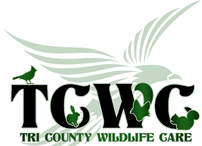Understanding Feral Cats
What is a feral cat?
A feral born cat has not been socialized, and usually avoids human contact. Pet cats which have been lost or abandoned are forced to fend for themselves. Both of these become a part of the feral community, and if not sterilized, more kittens are born and the cycle continues.
Feral cats are not 'adoptable' in a conventional sense. They have territories, and simply removing them DOES NOT solve the problems. 'Catch and Kill' programs don't work because other unsterilized animals move in to take their place. In order to control feral communities, a Trap-Neuter-Return program is the only effective method for population control. In such a program, cats in the community are humanely trapped, taken to a veterinarian for spay/neuter procedures, identified by tipping of an ear, then returned to their territory. Feral cat spay/neuter is FREE to Amador County residents through A-PAL and the Amador County Animal Shelter.
Living with feral cats
Here are some simple tips to help in coexisting with neighborhood cats and some of the problems they may be causing:
Problem: Cats are digging in my garden
Reason: It is a cats natural instinct to cover waste in loose sand or soil.
Solutions:
Problem: Cats are sleeping under the porch (or shed, etc.)
Reason: They are simply looking for a warm, dry place
Solutions:
Problem: Cats are getting into the trash can
Reason: More than likely they are scrounging for food
Solutions:
Problem: Feeding cats attract insects and wildlife
Reason: Food is left out too long, or at inappropriate times
Solutions:
Problem: Cats are yowling, fighting, and breeding
Reason: Unsterilized cats do these things!
Solution: Spay/neuter will reduce aggressive behavior and mating. Competition among males will be reduced. No more kittens!
Feral Freedom
Community Cats are controversial for sure – people either love them or hate them. A-PAL Humane Society has followed programs in Florida, San Jose and Sacramento County and City shelters by taking trapped cats turned in at the shelter and spaying
or neutering them, notching their ear for identification and giving them a rabies shot and returning them to their colony.
Each year our shelter staff had no choice but to kill hundreds of these cats and they have made it clear they would love to never do this again. Our Amador County Shelter staff loves animals and most of the feral cats turned in at our shelter are healthy and
obviously being fed by compassionate people.
What other communities discovered is that the catch and kill system simply does not work because other cats move in and they are not sterile so the colony continues to grow. Because cats are territorial, these cats keep others away so with aggressive trap, neuter and release, the colony numbers decrease and cat problems go away.
Yowling, spraying and fighting are all behaviors associated with intact cats. In nearly all cats, these behaviors disappear when they are sterilized.
A-PAL is asking for compassionate colony feeders to jump in and trap, neuter and release for free. Reproducing, free roaming cats is something no one wants especially when we can solve the problem with just a little effort.
These abandoned domestic cats deserve the chance to live out their lives, so please if you have feral cats, trap, neuter and release to prevent further overpopulation and suffering.
A feral born cat has not been socialized, and usually avoids human contact. Pet cats which have been lost or abandoned are forced to fend for themselves. Both of these become a part of the feral community, and if not sterilized, more kittens are born and the cycle continues.
Feral cats are not 'adoptable' in a conventional sense. They have territories, and simply removing them DOES NOT solve the problems. 'Catch and Kill' programs don't work because other unsterilized animals move in to take their place. In order to control feral communities, a Trap-Neuter-Return program is the only effective method for population control. In such a program, cats in the community are humanely trapped, taken to a veterinarian for spay/neuter procedures, identified by tipping of an ear, then returned to their territory. Feral cat spay/neuter is FREE to Amador County residents through A-PAL and the Amador County Animal Shelter.
Living with feral cats
Here are some simple tips to help in coexisting with neighborhood cats and some of the problems they may be causing:
Problem: Cats are digging in my garden
Reason: It is a cats natural instinct to cover waste in loose sand or soil.
Solutions:
- Scatter orange or lemon peel, coffee grounds, or pipe tobacco as natural deterrents that will not harm your garden
- Add rocks to your garden to discourage use as a 'litter box'
- Use a commercially available spray or granules that are safe for both your garden and the cats
Problem: Cats are sleeping under the porch (or shed, etc.)
Reason: They are simply looking for a warm, dry place
Solutions:
- Block openings (after checking for 'residents') using a tight lattice or chicken wire
- Provide a hidden 'doghouse' as an alternate shelter
Problem: Cats are getting into the trash can
Reason: More than likely they are scrounging for food
Solutions:
- Secure the lid(s) on the trash cans
- Feed the cats during daylight hours in an 'out of the way' place at a consistent time
Problem: Feeding cats attract insects and wildlife
Reason: Food is left out too long, or at inappropriate times
Solutions:
- Keep feeding areas clean
- Feed cats only during daylight hours, at a consistent time
- Remove any remaining food before dark
Problem: Cats are yowling, fighting, and breeding
Reason: Unsterilized cats do these things!
Solution: Spay/neuter will reduce aggressive behavior and mating. Competition among males will be reduced. No more kittens!
Feral Freedom
Community Cats are controversial for sure – people either love them or hate them. A-PAL Humane Society has followed programs in Florida, San Jose and Sacramento County and City shelters by taking trapped cats turned in at the shelter and spaying
or neutering them, notching their ear for identification and giving them a rabies shot and returning them to their colony.
Each year our shelter staff had no choice but to kill hundreds of these cats and they have made it clear they would love to never do this again. Our Amador County Shelter staff loves animals and most of the feral cats turned in at our shelter are healthy and
obviously being fed by compassionate people.
What other communities discovered is that the catch and kill system simply does not work because other cats move in and they are not sterile so the colony continues to grow. Because cats are territorial, these cats keep others away so with aggressive trap, neuter and release, the colony numbers decrease and cat problems go away.
Yowling, spraying and fighting are all behaviors associated with intact cats. In nearly all cats, these behaviors disappear when they are sterilized.
A-PAL is asking for compassionate colony feeders to jump in and trap, neuter and release for free. Reproducing, free roaming cats is something no one wants especially when we can solve the problem with just a little effort.
These abandoned domestic cats deserve the chance to live out their lives, so please if you have feral cats, trap, neuter and release to prevent further overpopulation and suffering.
DONATE to the Feral Cat Program
All contributions are fully tax deductible
A-PAL's Tax ID is 94-2462789
All contributions are fully tax deductible
A-PAL's Tax ID is 94-2462789

